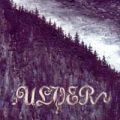| Windowpane |
|
15 Sep 2006 23:41 | Quote |
United States  Posts: 37
|
How do you know what Chords are played in certain keys? If you're in the key of G major then of course you solo within that scale or slightly outside of it. But what about chords? If I understood this it would open up tons of doors. Thanks for any help guys. |
| Davo |
|
16 Sep 2006 00:00 | Quote |
Joined: way back Canada  Karma Karma 
|
I'm just a beginer working out the same questions...so anyone can jump in if I am wrong... but I understand that the chords that go with a certain key are based on the root notes of the notes that make up the scale for that key.
as for the specific shape of the chords, I have the impression that has just been worked out over time based on what chords sound pleasing.
To find the actual chords as they have been worked out, you can use the chord progression page here.
I am inclined to want to believe that everything in music can be reduced to a logical mathematical set of rules that fundamentally explains everything... but I am slowly learning that some of the fundamentals have just been intuited. The real trick for me is figureing out where the rules end, and the intuition part begins hehe. |
| mightydave |
|
16 Sep 2006 05:49 | Quote |
Joined: way back Belgium  Karma Karma: 2 
|
yes windowpane , davo was right , just check the chord progression page , you should remember the sequences in which major and minor occurs like the 1th,4th,5th of a chord are major, 2rd,3rd and 6th are minor and the 7th is diminished (this is only for the major and minor progressions)
so if you know the notes of all scales you also know all the chords of that scale by simply knowing the sequence. hope you understand a bit |
| Windowpane |
|
16 Sep 2006 22:11 | Quote |
United States  Posts: 37
|
Yea that makes sense. Only question now is: Do you mean taking the 1st 4th and 5th notes from teh root note make a major chord and the 2nd 3rd and 6th notes make minor chords? Just making sure. Also, when I go to the Chord Progression part of this site it says alot about Triads and all the upper and lowercase roman numerals. Whats that all about? Can you only use the few chords they give you whenever you play in that key? For most keys it had maybe 6 chords. That would limiti you alot I would think. Anyone clear this up for me? Sorry if this response was a bit scattered. Thanks for your help by the way. It's very much appriciated. |
| mightydave |
|
17 Sep 2006 05:56 | Quote |
Joined: way back Belgium  Karma Karma: 2 
|
ok windowpane first of all the roman numbers stand for the numbers of the notes so I is always the root note , II is the second note of the scale etc....
i'll give some examples first off in c major you have
I---ii---iii---IV---V---vi---vii*
C----D----E----F----G---A----B--
so this means in c major you have the chords (1st,4th,5th) Cmajor,Fmajor and Gmajor
and (2nd,3rd,6th)d minor, e minor and a minor and you have (7th) b diminished
now an example in G major
I---ii---iii---IV---V---vi---vii*
G----A----B----C----D---E----F#--
so this means in g major you have the chords (1st,4th,5th) Gmajor,Cmajor and Dmajor
and (2nd,3rd,6th)a minor, b minor and e minor and you have (7th) f# diminished
i'll now explain a bit further the roman numbers
capital roman numbers like I or III are major chords, roman numbers that aren't capital like ii or iii are minor chords and chords which aren't capital with a star like i* or ii* are diminished chords
now you say you don't have much chords in a scale well the 6 you only have that you think or only the major and minor chord you should also check out the major 7th , major 6th and major 9th chords
so in c major you have the following chords
major,minors
I---ii---iii---IV---V---vi---vii*
C----D----E----F----G---A----B--
7th chords
I-----ii---iii---IV-----V---vi--vii
Cmaj7-Dm7--Em7--Fmaj7--G7--Am7--Bm7b5
6th chords
I----ii---IV---V
C6---Dm6--F6---G6
9th chords
I-------ii-----IV------V-----vi
Cmaj9--Dm9-----Fmaj9---G9----Am9
now you already have 23 chords you can use in your scale (cmajor in this example)
but still that's not all you still have powerchords , suspended fourths, suspended seconds , minor eleventh , minor thirteenth etc...
this is also a scattered answer but i hope you understand it a bit |
| Davo |
|
17 Sep 2006 12:55 | Quote |
Joined: way back Canada  Karma Karma 
|
That's a super useful explanation. Thanks MightyDave :) |
| Windowpane |
|
17 Sep 2006 14:47 | Quote |
United States  Posts: 37
|
Yes, this helps alot to understand. Thank you so much. Now I ask: How do you make these chords? I understand that I can look at this website to find out. But I feel that it would make me hanicaped. Is there a method as to which you can figure out how to make major , major 7th, 9th, 6th, powerchords , suspended fourths, suspended seconds , minor eleventh , minor thirteenth? Anything? Theres got to be a way to look at the key scale and form the chord you want. Thanks again fo all your help. It's helping ALOT! |
| mightydave |
|
18 Sep 2006 06:06 | Quote |
Joined: way back Belgium  Karma Karma: 2 
|
okay to make these chords you gotta two things
1. the notes that are in the scale
2. how the chords are made up
1.
first it's best to learn by heart the notes of the scales. the scales are made up by a w-w-h-w-w-w-h sequence , best way is just to remember in order the number of sharps and flats a scale has like example first you have c major with no sharps or flats
then g major with one sharp (f#)
then d major with two sharps (f#,c#)
then a mjor with three sharps (f#,C#,g#)
what could help you with this is called the circle of fifths
http://users.skynet.be/fa032925/circleoffifths.gif
if you go to the right you find in order the scales with the number sharps and if you go left you find the scales with the flats so the scale of Eb has three flats , scale of E has four sharps
here a complete list
(with sharps)
C maj - 0 sharps
G maj - 1 sharp - F♯
D maj - 2 sharps - F♯, C♯
A maj - 3 sharps - F♯, C♯, G♯
E maj - 4 sharps - F♯, C♯, G♯, D♯
B maj - 5 sharps - F♯, C♯, G♯, D♯, A♯
F♯ maj - 6 sharps - F♯, C♯, G♯, D♯, A♯, E♯
C♯ maj - 7 sharps - F♯, C♯, G♯, D♯, A♯, E♯, B♯
(with flats)
2. the chord formulas
i've just uploaded a helpfull picture with the formulas of a big list of chords
http://users.skynet.be/fa032925/chords.JPG
so you gotta know the formulas for each type a chord
2.1 first example
so let's say you want a G major 7th
you first take the g scale G-A-B-C-D-E-F# you then look at the formula for a major 7th that's 1-3-5-7 so i take these notes , that's G-B-D-F# search these notes on your fretboard on four or more strings(you can have two same notes of one)and voila you have a g maj7th chord.
2.2second example
powerchords are made up by the root (I) and the fifth(V) and mostly the root is doubled
so if you have A5
a major scale : A-B-C#-D-E-F#-G#
7 --> root (A)
7 --> fifth (E)
5 --> root (A)
what's not on the list is a powerchord with added ninth
9 --> ninth (B)
7 --> fifth (E)
5 --> root (A)
now you might have the question , huh a ninth??? while there are only 7 notes in the chord , a ninth just corresponds with the second note of the chord , so you just do minus seven always , so an eleventh would be the fourth note , etc...
this took me some time hope you understand it
|
| mightydave |
|
18 Sep 2006 06:14 | Quote |
Joined: way back Belgium  Karma Karma: 2 
|
still the easiest way to play a lot of chords fast and easy is by learning the moveable barre shapes of the chords so you only have to find the root. but that would still limit you to use the same voicing over and over so now you can make up your own and hear how that sounds.
have fun! |
| Windowpane |
|
18 Sep 2006 15:12 | Quote |
United States  Posts: 37
|
Thanks guys! This all helped very much. If I have anymore questions i'll be sure to shoot them your way! I'm going to go work on this stuff rigth away! |
| Windowpane |
|
18 Sep 2006 15:15 | Quote |
United States  Posts: 37
|
BTW. That picture is very helpful!!!!!!! |
| mightydave |
|
18 Sep 2006 15:28 | Quote |
Joined: way back Belgium  Karma Karma: 2 
|
yeah i know i have a copy lying around here anytime , cleared up a lot for me too ! it was a pleasure helping you out ! |
|
|





